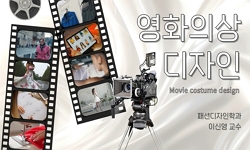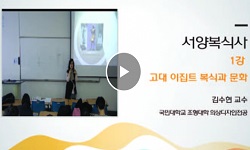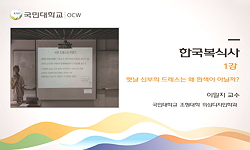Fine art and clothes have been closely connected since art became part of civilization. However, there relationship was one-sided rather than exchanging the essence of each other. In the 20th century, modern art began to change. Artists started interv...
http://chineseinput.net/에서 pinyin(병음)방식으로 중국어를 변환할 수 있습니다.
변환된 중국어를 복사하여 사용하시면 됩니다.
- 中文 을 입력하시려면 zhongwen을 입력하시고 space를누르시면됩니다.
- 北京 을 입력하시려면 beijing을 입력하시고 space를 누르시면 됩니다.
https://www.riss.kr/link?id=A82671166
- 저자
- 발행기관
- 학술지명
- 권호사항
-
발행연도
2011
-
작성언어
-
-
주제어
개념미술 ; 의상 ; 사용되어진 형식 ; 개념적 역할 ; Conceptual art ; Costume ; Types of using ; Roles as concepts
-
KDC
500
-
등재정보
KCI등재,SCOPUS
-
자료형태
학술저널
-
수록면
828-840(13쪽)
- DOI식별코드
- 제공처
- 소장기관
-
0
상세조회 -
0
다운로드
부가정보
다국어 초록 (Multilingual Abstract)
Fine art and clothes have been closely connected since art became part of civilization. However, there relationship was one-sided rather than exchanging the essence of each other. In the 20th century, modern art began to change. Artists started intervening clothes in their work as conceptual tools. In the 1960s, Marcel Duchamp started to study ``what is fine art?`` He tried to perform anti-aesthetic work that denies traditional types and contents of fine art by reconsidering a concept of fine art that started a new chapter of conceptual art in the late 20th century. Conceptual art is about concepts and ideas of the work rather than aesthetic and material concerns for the challenges traditional ideas. Conceptual art asks audiences for more active reactions. For these reasons, semi logical ideas and clothes became very important to conceptual art. This study categorizes and analyzes various roles of clothes in conceptual art. Conceptual arts since 1960 were studied in this research and the works of clothes were intervened were analyzed. The types of using clothes in conceptual art can be divided into ``ready made,`` ``intervention,`` ``data type,`` ``language,`` and ``action and process.`` The different types were mixed together rather than used alone. Conceptual artists tried to deliver the characteristics and attributions of modern society through clothes. They expressed criticism of political society, anti war movements, absence caused by death, new lives, violated femininity, changed meanings of marriage, and absence of individual rights under the social system in their work. Clothes played their roles as concepts of various things including violated femininity, illusions of politicians, autocracy, new lives, social systems, and regulations.
동일학술지(권/호) 다른 논문
-
추위 훈련이 신체 조성에 미치는 영향 -체중, 체지방량, 골격근량을 중심으로-
- 한국의류학회
- 박주희 ( Joo Hee Park )
- 2011
- KCI등재,SCOPUS
-
지각된 유사성이 패션 브랜드 확장효과에 미치는 영향력에 있어서 소비자-브랜드 관계 질의 조절효과
- 한국의류학회
- 김주현 ( Joo Hyun Kim )
- 2011
- KCI등재,SCOPUS
-
- 한국의류학회
- 오지은 ( Jee Eun Oh )
- 2011
- KCI등재,SCOPUS
-
- 한국의류학회
- 이민선 ( Min Sun Lee )
- 2011
- KCI등재,SCOPUS






 ScienceON
ScienceON KISS
KISS







